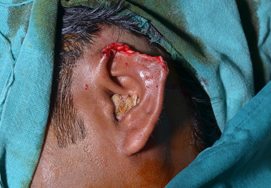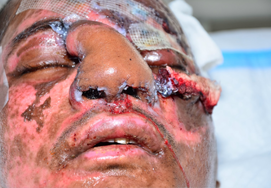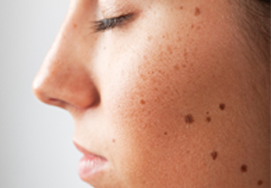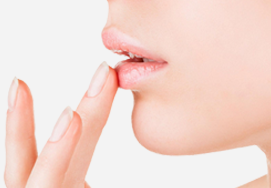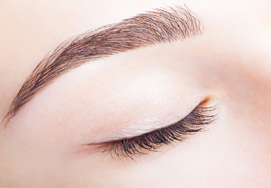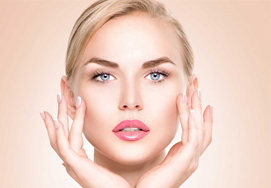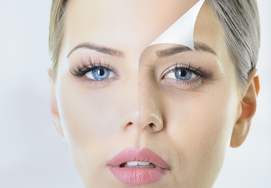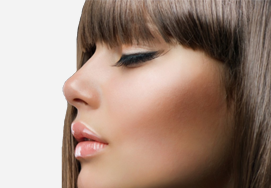Dermabrasion Chemical Peeling
Performed in individuals with acne, wrinkles, stretch marks, uneven skin tone due to sunburn, scars due to accidents or previous surgeries, and actinic keratosis

- What is Dermabrasion and Chemical peeling?
- What are the types of surgeries?
- Which individuals are suitable for the surgery?
- Which individuals are not suitable for the surgery?
- How should I prepare for the surgery?
- What happens during the surgery?
- What should be the aftercare of the surgery?
- What are the postsurgical considerations?
What is Dermabrasion and Chemical peeling?
Dermabrasion is a controlled surgical removal of the top layer of the skin by surgical scrapping. A wire brush or a burr containing diamond particles is used for this purpose. Dermabrasion works out well for deep skin treatments. A minimally invasive treatment for lighter scarring and discoloration is Microdermabrasion.
Dermabrasion improves stretch marks, acne scars, darker pigmentation, blackheads, and enlarged pores. It helps to thicken your collagen and makes the skin look younger.
Chemical peeling is a non-surgical removal of the top layer of the skin with a caustic solution. The solutions can be phenols, trichloroacetic acid, beta-hydroxy acids, or alpha-hydroxy acids. The chemicals applied over the face remove the damaged skin and improve the skin texture. The procedure works out well for fine wrinkles.
What are the types of surgeries?
Microdermabrasion is a type of dermabrasion which is used for lighter scarring.
Chemical peeling is of 3 types depending on the severity of the problem. They are:
- Light peeling –superficial skin repair i.e., to the epidermis
- Medium peeling –repair of skin below the epidermis, i.e., to the top layers of the dermis
- Deep peeling –repair of the deeper layers of the dermis
Which individuals are suitable for the surgery?
Dermabrasion and chemical peeling are performed in individuals with
- Acne
- Wrinkles
- Stretch marks
- Uneven skin tone due to sunburn
- Scars due to accidents or previous surgeries
- Actinic keratosis
Which individuals are not suitable for the surgery?
Dermabrasion is not suitable for people who have
- Wrinkles around the eyes
- Darker skin
- Active stages of recovery after chemical peeling
- Active acne or severe burn
- Active herpes infection
- Used isotretinoin in the past 6 to 12 months
Chemical peeling is not indicated in people with
- A history of skin scarring
- Previous acne treatment during the last one year
- An abnormal pigmentation
- A red hair and pale skin
How should I prepare for the surgery?
Dermabrasion :
Convey your expectations to the surgeon and have a clear communication about the surgery. The surgery is performed on an outpatient basis or in the doctor’s office. The surgeon checks your medical records, advises what medicines you need to take or avoid before the surgery. Instructions about the diet and medicines would be given. If you have a habit of smoking, you may have to stop smoking 1 or 2 weeks before and after the surgery.
Chemical Peeling:
Before chemical peeling is performed, the skin requires a pre-treatment.
- Tretinoin is given before applying chemicals to prepare the skin for the procedure.
- Antiviral treatment with acyclovir is given for people with cold sores. The treatment should be continued for 2 weeks after the procedure to prevent any re-activation of the cold sores.
- Hydroquinone is given for people with darker skin complexion.
- Sunscreen lotions should be used before and after the chemical peeling.
It is important that you express your feelings regarding the surgery. The stress and the anxiety that you are facing may affect your recovery.
What happens during the surgery?
Dermabrasion:
You would be given a local anesthesia followed by a sedative. If the procedure involves deeper abrasion, general anesthesia is given.
The surgery takes about few minutes to an hour and a half. It is performed in only one session unless the surgery involves the larger and deeper areas of the skin. The burr or the wire mesh is used to scrap the scar or the wrinkle on the skin. Then, the surgeon uses a hand-held instrument called the dermatome. This helps to level the skin of the affected area with that of the remaining skin area. Later, the surgeon uses ointment or dressing or any dry treatment to treat the skin.
Chemical peeling:
Superficial peeling may bring about burning sensation, which can be relieved by application of cool compressors and fan-aided evaporation. The deeper peeling requires local or general anesthesia. After anesthesia is given, a defatting solvent such as acetone or alcohol is used to wipe the face uniformly. Then, the peeling solution is applied for a period of time. Later, the peel is washed off, a neutralizing solution is applied, and the area is bandaged.
What should be the aftercare of the surgery?
Dermabrasion: It takes about 7-30 days for the skin to become normal. You may have difficulty swallowing, eating and speaking. The swelling subsides in a few days. Your face may itch as the healing occurs. You can get back to work after 2 weeks of the surgery.
You need to abstain from active exercises or swimming for about 2 weeks. Keep away from chlorinated waters and exposure to sun if you swim. Apply a sunscreen lotion for at least 12 months.
Chemical peeling: Any chemical peeling may result in skin flaking, redness, swelling, and irritation after the procedure. Adequate rest for about 2 weeks helps to give sufficient time to heal. Sun exposure should be avoided to prevent hyper-pigmentation. With deep chemical peeling, discomfort may last for several days.
What are the postsurgical considerations?
- Dermabrasion as well as chemical peeling has similar risks of scarring, bleeding, infections, facial herpes virus reactivation. The skin gets a red and raw look.
- Permanent darkening of the skin can occur if there is sun exposure during and after the surgery. You may develop white heads after the surgery, which will fade away slowly.
- Chemical peeling comes with the additional risks of the anesthesia as deep chemical peeling may require higher doses of anesthesia.


